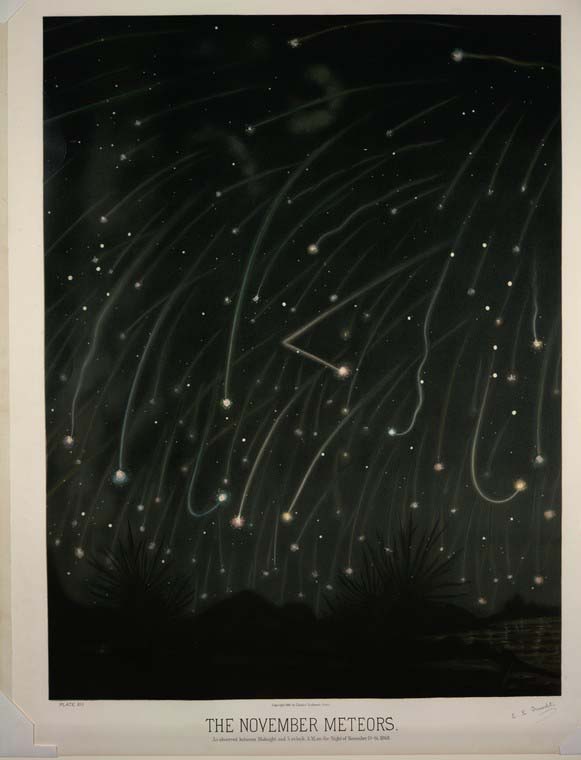Feature Blog Post by Program Director, Anna Ojascastro Guzon

George Arents Collection, The New York Public Library. “Diagram of Mount Polomar telescope.” The New York Public Library Digital Collections.
http://digitalcollections.nypl.org/items/510d47da-938d-a3d9-e040-e00a18064a99
Goggles that allow one to see sound, affordable time machines, a spherical hologram projector, and a “conflict-resolution machine.” The students were asked to create new technologies and within minutes they were listing ideas, then writing down the details of their inventions. We first brainstormed as a class, on the most important technological advances in history. At 4:45 in the evening, the teens could still call out answers faster than I could write on the dry-erase board. They thought of at least a dozen items, from wireless internet to the pen to, my favorite response, the Sleep-Number bed.
The students then listened to recordings of excerpts, from The Martian by Andy Weir and The Machine Stops by E.M. Forster, describing the machinery that would alter the lives of the main characters. In the upcoming weeks, we’ll look at pieces by Ray Bradbury, Kurt Vonnegut, Mary Shelley, Octavia Butler, and Margaret Atwood, as the students develop sci-fi worlds.
After writing detailed descriptions of their newly conjured machinery, I asked for volunteers to read their work aloud. To my surprise, the class clapped after each reading even when I had forgotten to lead the applause. Some were too focused on their writing to stop and read to us. And at five minutes after the official end of the session, hands were still in the air. At ten minutes after we had to insist they go to dinner but we promised to continue next week.
Nine young men and four tutors have been gathering for the winter/spring semester sessions. One tutor, Gail Moolsintong, is a mother of four young children and a part-time pediatrician. Her regular babysitter is out of town, so she drove 30 minutes to help out for 30 minutes, then drove back home to greet her children as they exited the schoolbus. Kate Heidorn is a full-time graduate student, who also works part-time. And Jennifer Rengachary works part-time and cares for two young children. I hire a babysitter every Monday to take my 4-year-old to martial arts class, then pick up my 10-year old from band practice, and watch them until I get home at 6:15pm, at which time I race to make dinner and start homework.
Why do we make this extra effort to get to Marygrove every Monday? I won’t speak for the other tutors but I often think of my volunteer work as a luxury. I know I’m lucky to be able to volunteer, and I wish that everyone could experience our 75-minute world. The students are respectful and extremely appreciative, especially when we can give the one-on-one attention that they rarely receive elsewhere.
We have already been able to see concrete results from the students as well. Three boys, started last semester with a D average, and were able to pull their grades up to B averages. One student started the semester with an F in English and ended with a B. And three more boys, who are no longer in high school, join us just for the writing exercises.
I’m not sure by whom I am most impressed. I wouldn’t expect the average 18-year-old boy to consistently participate in a writing workshop on Monday evenings, and on his own accord. But the children at Marygrove are extraordinary in their ability to find joy in things that most people take for granted, like a new pack of loose-leaf… homemade cookies… focused attention.
When I return home to my children, I get to remember how lucky we are to have each other, and the frozen pizza dinner, and the homework started late, and the plates in the sink. My boys know what my work entails and I’m proud of being able to set an example for them.
Over the last couple weeks, YourWords has been putting extra effort into finding tutors. Not only do we need several more tutors at Marygrove, but other institutions are asking for our services, which we can’t provide without more volunteers. We wish we could connect all young St. Louisans, who want to learn more, with those who have already benefitted from an education. We want those who have a need to be heard to have the tools to communicate. And we feel that everyone benefits from the extra hassle of leaving work early, obtaining a babysitter, studying for a test in advance, and driving in traffic, to a part of St. Louis, one has never seen.

Science, Industry and Business Library: General Collection , The New York Public Library. “The November meteors. As observed between midnight and 5 o’clock A.M. on the night of November 13-14 1868.” The New York Public Library Digital Collections. 1881 – 1882. http://digitalcollections.nypl.org/items/510d47dd-e6cf-a3d9-e040-e00a18064a99
Two weeks ago, the students wrote metaphors and similes using music as inspiration. As they listened to pop, jazz, bluegrass, opera and rock, they were asked to record in a chart the instruments they were hearing, the colors they saw, and the parts of the body they felt. They then combined the words to create figurative language. They described a range of emotions, shifting from Welcome to the Jungle by Guns n Roses to the duet from The Pearl Fishers by Bizet. Here are some results:
“My hands are like a harp, dancing spiritual white.”
“Hips move clumsy like hippos blindfolded.”
“My soul struck like a sad piano falling in a violet blue abyss.”
“My hands beat and clap like a yellow bongo at prom.”
“My heart is like blue heaven with a weeping piano.”
“Twilight spreads through stars as dramatic piano changes faces.”


